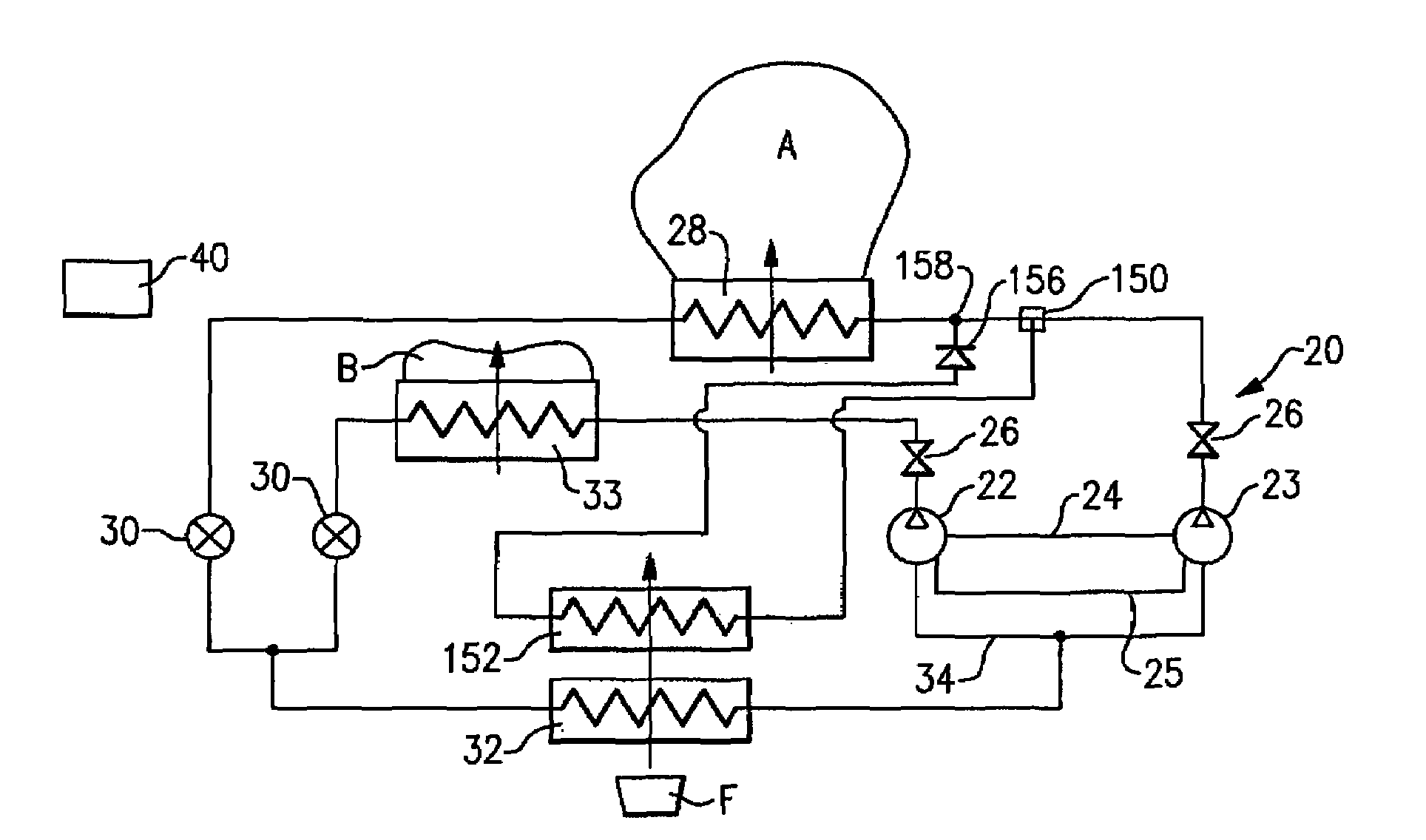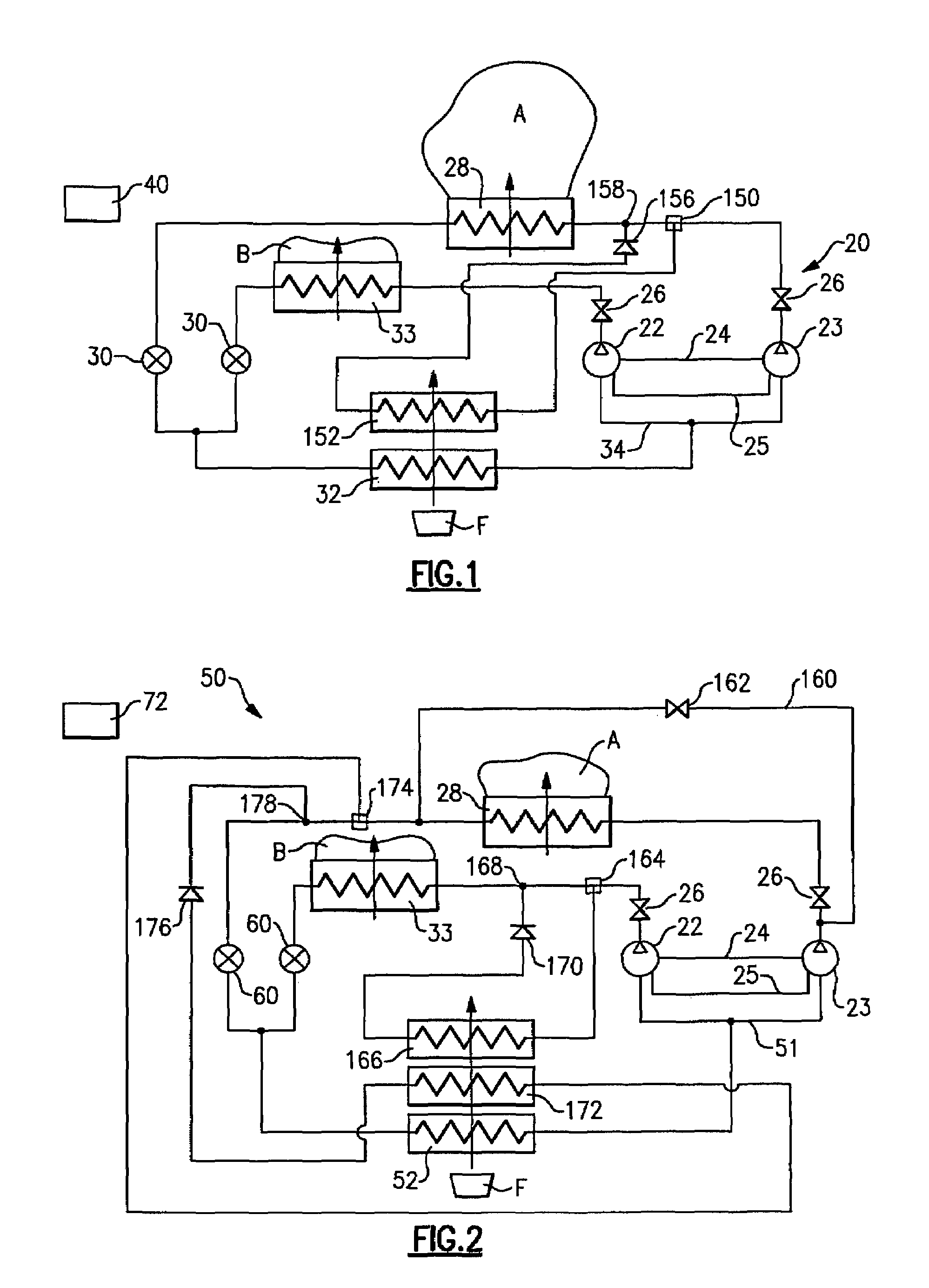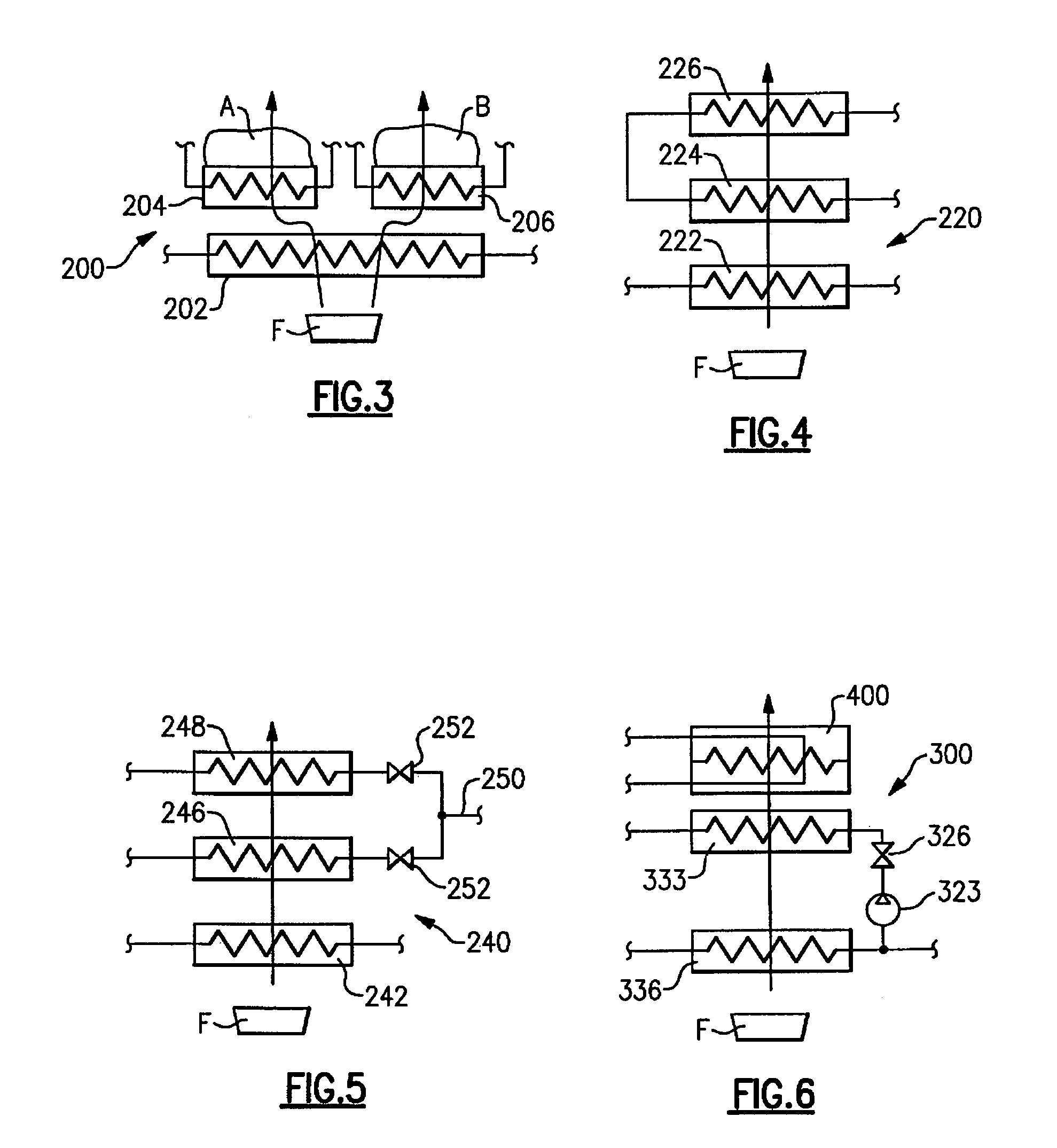Multiple condenser reheat system with tandem compressors
a technology of tandem compressors and condensers, which is applied in the field of refrigerant systems, can solve the problems of not being used and challenging refrigerant system designers, and achieve the effect of preventing excessive frost formation
- Summary
- Abstract
- Description
- Claims
- Application Information
AI Technical Summary
Benefits of technology
Problems solved by technology
Method used
Image
Examples
embodiment 220
[0031]FIG. 4 shows an embodiment 220, wherein an evaporator 222 is associated with a pair of reheat coils 224 and 226. As can be seen, the reheat coils 224 and 226 are in a serial flow relationship, and receive refrigerant flow from a common point in the refrigerant cycle. Hence, both reheat coils 224 and 226 employ similar reheat concepts, but the refrigerant flowing through each coil would have a different thermodynamic state and consequently would provide different amount of reheat. Obviously, as in the FIG. 3 embodiment, the reheat coils 224 and 226 can be placed side-by-side behind the evaporator 222 to treat separate portions of the airflow.
[0032]FIG. 5 shows a system 240, wherein an evaporator 242 is associated with a pair of reheat coils 246 and 248. As can be seen, a common supply line 250 for the refrigerant flowing into the reheat coils 246 and 248 is utilized, however, the reheat coils 246 and 248 receive the refrigerant in a similar thermodynamic state and in a parallel...
embodiment 300
[0033]Finally, FIG. 6 shows an embodiment 300, wherein an evaporator 336 is associated with a reheat coil 333, and wherein the reheat coil 333 is actually one of the condensers associated with a compressor 322 and a discharge valve 326. Again, the evaporator 336 would be associated with at least one more compressor in this embodiment. Furthermore, one of the condensers (the condenser 333 in this case) utilized as a reheat coil in this embodiment may represent only one of multiple reheat stages (coils) associated with the evaporator 336, and a conventional supplemental reheat coil 400 could also be employed here.
[0034]Notably, the various refrigerant systems disclosed in this application can all be utilized as air conditioning units or as heat pumps.
PUM
 Login to View More
Login to View More Abstract
Description
Claims
Application Information
 Login to View More
Login to View More - R&D
- Intellectual Property
- Life Sciences
- Materials
- Tech Scout
- Unparalleled Data Quality
- Higher Quality Content
- 60% Fewer Hallucinations
Browse by: Latest US Patents, China's latest patents, Technical Efficacy Thesaurus, Application Domain, Technology Topic, Popular Technical Reports.
© 2025 PatSnap. All rights reserved.Legal|Privacy policy|Modern Slavery Act Transparency Statement|Sitemap|About US| Contact US: help@patsnap.com



